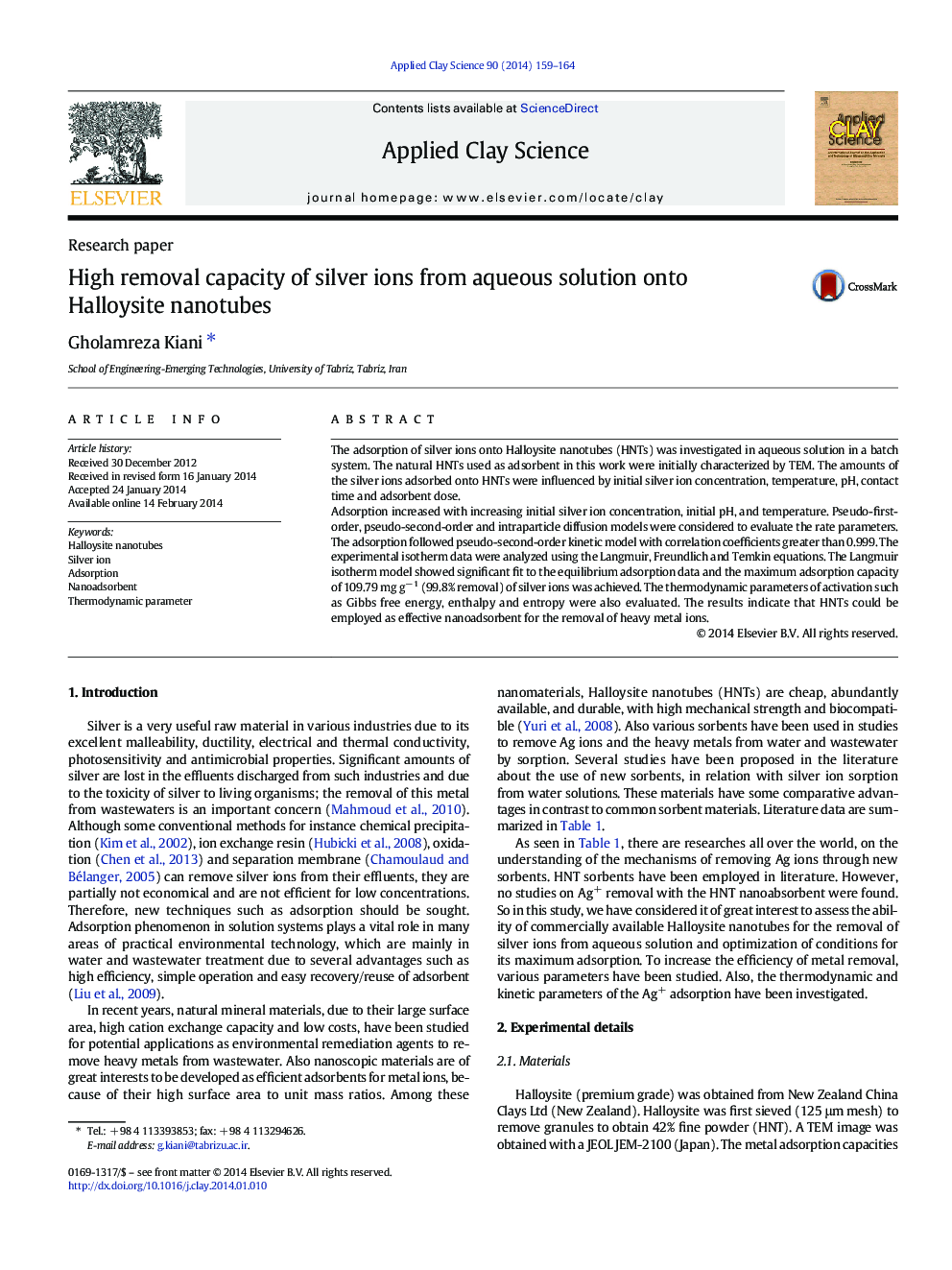| Article ID | Journal | Published Year | Pages | File Type |
|---|---|---|---|---|
| 1694720 | Applied Clay Science | 2014 | 6 Pages |
•The maximum adsorption capacity of silver ions is 109.79 mg g− 1 (99.8% removal).•HNTs could be employed as effective nanoadsorbent for the removal of heavy metal ions.•The adsorption behavior is described by a monolayer Langmuir-type isotherm.•The adsorption process was exothermic accompanied by positive entropy.
The adsorption of silver ions onto Halloysite nanotubes (HNTs) was investigated in aqueous solution in a batch system. The natural HNTs used as adsorbent in this work were initially characterized by TEM. The amounts of the silver ions adsorbed onto HNTs were influenced by initial silver ion concentration, temperature, pH, contact time and adsorbent dose.Adsorption increased with increasing initial silver ion concentration, initial pH, and temperature. Pseudo-first-order, pseudo-second-order and intraparticle diffusion models were considered to evaluate the rate parameters. The adsorption followed pseudo-second-order kinetic model with correlation coefficients greater than 0.999. The experimental isotherm data were analyzed using the Langmuir, Freundlich and Temkin equations. The Langmuir isotherm model showed significant fit to the equilibrium adsorption data and the maximum adsorption capacity of 109.79 mg g− 1 (99.8% removal) of silver ions was achieved. The thermodynamic parameters of activation such as Gibbs free energy, enthalpy and entropy were also evaluated. The results indicate that HNTs could be employed as effective nanoadsorbent for the removal of heavy metal ions.
